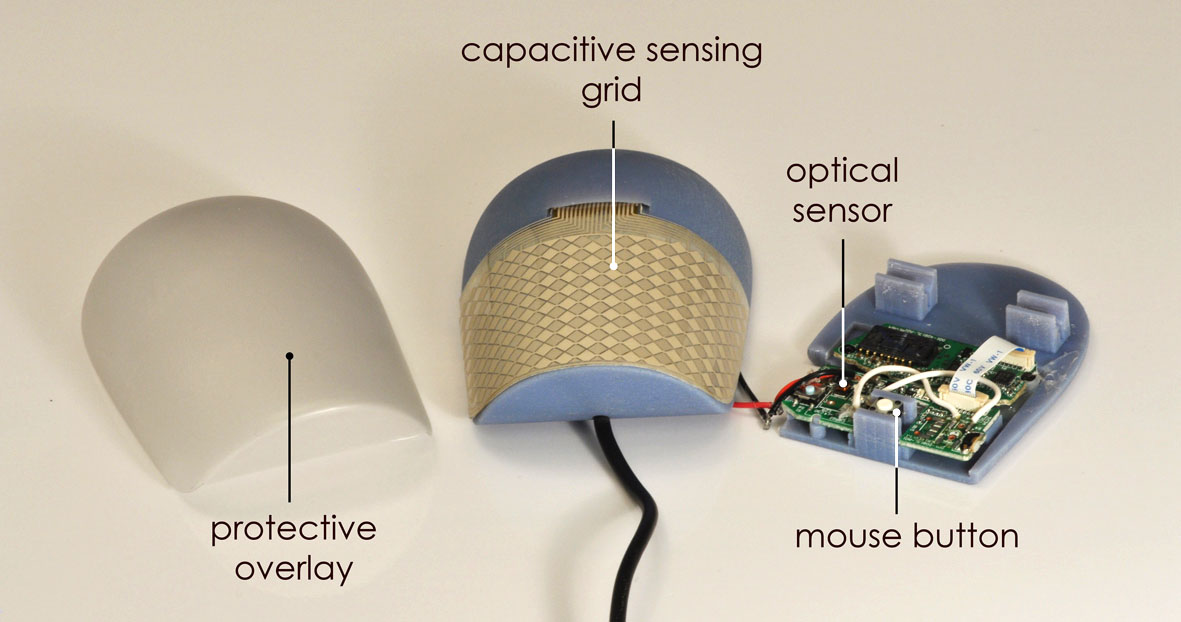
1963: Bill English constructs first mouse prototype based on Douglas Engelbart’s sketches. This mouse uses two perpendicular wheels attached to analog potentiometers to track movement. The first mouse has only one button, but more are to come.
1968: Douglas Engelbart gives a 90-minute demonstration on December 9 at the Fall Joint Computer Conference in San Francisco. Among other things, it showcases a refined SRI mouse with three buttons.

1972:Jack Hawley and Bill English, inspired by Engelbart’s work, design a digital mouse for Xerox PARC. This new mouse does not require an analog-to-digital converter but instead sends digital positional information directly to the computer. It also contains the first mouse ball, a metal ball bearing pressed against two rollers to track movement. A similar tracking design (albeit with a few drastic modifications), would be used in most mice for the next 27 years
1981: Xerox produces a commercial mouse for its expensive 8010 Information System (aka the “Star”). It features two buttons and ball tracking. However, the entire Star system sells for over $20,000, dooming it and its mouse to relative obscurity.

Richard Lyon invents the first optical mouse at Xerox PARC. This mouse requires a special dot-covered pad for tracking.
1982: Steve Kirsch invents an optical mouse that requires a mousepad with a grid printed on it for tracking. He founds Mouse Systems in 1982 to sell the first commercial optical mouse and later provides precision mice for Sun workstations, among others.
1982:Logitech sells its first mouse, the P4, designed by Jean-Daniel Nicoud. This dome-shaped device, among the first commercial mice available, sells for $299.

1983: With permission from Xerox, Jack Hawley founds Mouse House to refine and sell his original Xerox mouse design. The boxlike, three-button Hawley X063X uses brush contact encoder wheels and costs about $400.
Under contract, design firm Hovey-Kelley creates the first inexpensive, mass-producible, reliable mouse for Apple. Its key components include optical encoder wheels, a free-moving tracking ball, and a precision injection-molded inner frame. This design breakthrough sets the stage for cheap, reliable consumer mice that everyone can afford.
 The Mouse House's Hawley X063X Mouse.
The Mouse House's Hawley X063X Mouse.
Apple’s first commercial mouse goes public as part of the Apple Lisa system. The mouse uses a squeeze-release DE-9 connector and notably features only one button—a controversial design decision that would remain the hallmark of Apple mice for 22 years.
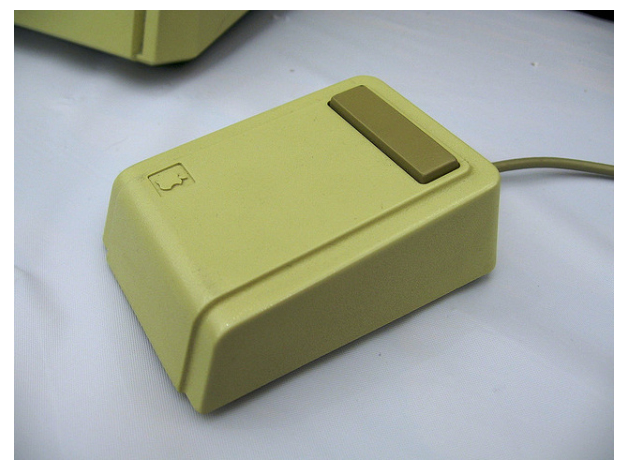
Microsoft ships its first IBM PC mouse, retailing for $195. The two-button mouse initially requires a special peripheral card for use but later supports connection through a PC’s serial port.
The original Microsoft Mouse.


1984: Apple ships a one-button mouse with the original Macintosh featuring a new exterior redesign. It features a nine pin DE-9 connector with thumb screws to secure the connector in place. Functionally, the mouse operates nearly identically to its Lisa predecessor.
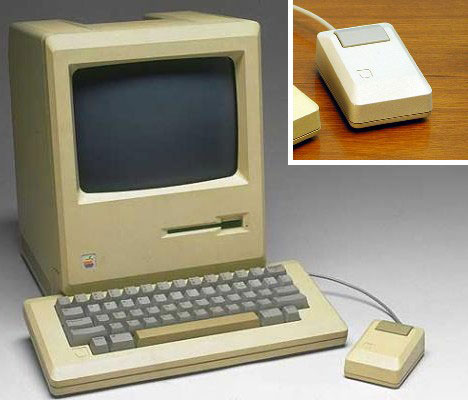
Logitech designs the world’s first cordless mouse as part of the obscure Metaphor computer system. The battery-powered mouse uses infrared light (like a TV remote control) to communicate with a base receiver unit. Various companies try a similar IR technique over the years, but it never takes off.
1985 Microsoft mouse 5.0
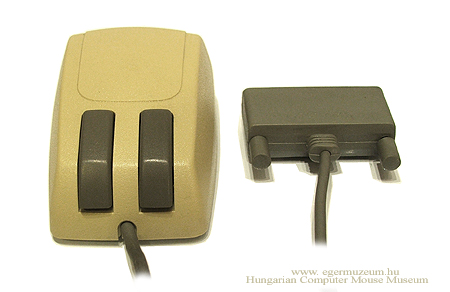
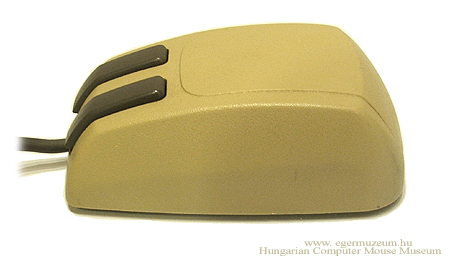
1986: Apple introduces a new way of connecting mice and keyboards—Apple Desktop Bus (ADB)—with the launch of the Apple IIgs, and on the Mac SE a year later. Not surprisingly, Apple releases a new wedge-shaped mouse for the bus called the Apple Desktop Bus Mouse.

1987: IBM introduces the PS/2 line of PCs, which feature the world’s first PS/2 mouse connectors. These connectors later become a standard in the PC-clone world.

1991: Logitech releases the world’s first wireless mouse to use radio frequency (RF) transmission, the Cordless MouseMan. Unlike infrared (IR) cordless solutions, Logitech’s mouse does not require line-of-sight with a base station to work

1993: Honeywell introduces a unique mouse tracking concept with its Opto-Mechanical mouse. Instead of a rolling ball, the mouse uses two small angled discs on its bottom that track movement.
Apple releases the Apple Desktop Bus Mouse II, which features a more ergonomic teardrop shape than its wedge-shaped predecessor. Otherwise, the mouse is functionally identical

Microsoft mouse 2.0

1995: Mouse Systems releases ProAgio, the first commercial mouse with a scroll wheel. Few people notice.
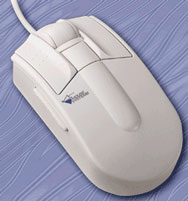 Mouse Systems's ProAgio—the first commercial mouse with a scroll wheel.
Mouse Systems's ProAgio—the first commercial mouse with a scroll wheel.
1996: Microsoft popularizes the scroll wheel with the release of the IntelliMouse Explorer. It features a rubberized plastic wheel placed between two standard mouse buttons that can also be pressed as a button. Rotating the wheel allows easy scrolling of windows, among other functions.


1998: The Apple “hockey puck” mouse ships with the original iMac. Aside from its ergonomically questionable saucer-shaped appearance, this mouse (formally titled Apple USB Mouse) is notable as the first Apple mouse to support the USB peripheral standard. Simultaneously, the iMac marks the beginning of the end of the ADB interface that graced Macs for 11 years.

1999: Agilent develops the first optical mouse sensor that works without need for a special pad, providing a breakthrough for the optical tracking revolution. This LED-based sensor and its successors would later be used in mice from Microsoft, Logitech, Apple, and dozens of other companies.
Microsoft releases its first optical mice. The IntelliMouse Explorer with IntelliEye ($70) features no less than five buttons and an optical tracking sensor that doesn’t require a special mouse pad. Microsoft also offers a simpler optical mouse for a lower price.

Following Logitech’s recent improvements in RF cordless technology, Microsoft releases its first RF wireless mouse, the Cordless Wheel Mouse, marking the beginning of a new wireless trend. Other peripheral makers follow suit with a new generation of more accurate and battery-efficient wireless mice.
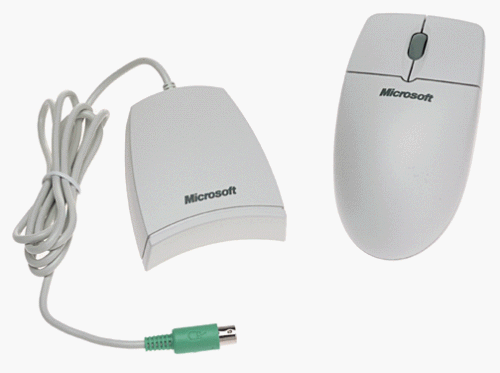
2000: Apple releases the Pro Mouse, its first mouse with an optical tracking sensor. It features a monolithic surface button and a stylish translucent oblong shape.


2004: Logitech releases the first mouse to use a laser for optical tracking, the MX 1000. The laser tracking system, developed by Agilent, provides far greater accuracy than the previous LED-based optical tracking method.
2005: Apple releases the Mighty Mouse, its first mouse to feature more than one button (four, in fact). Ironically, the two main buttons are not physical, but instead use capacitive touch sensors with a tiny speaker to provide audible feedback for each click. The mouse also includes a scroll ball that lets users scroll in any direction.



2006: Apple releases the Wireless Mighty Mouse, which uses the Bluetooth wireless protocol.
 Apple's Wireless Mighty Mouse
Apple's Wireless Mighty Mouse
Microsoft : Designed to fit a natural, relaxed hand posture, the first Natural mouse, Natural Wireless Laser Mouse 6000,debuts.

2008: Featuring a revolutionary new design shaped like a crescent moon, the Arc Mouse folds closed to reduce in size by almost half, giving consumers the comfort of a full-size mouse with the portability of a notebook mouse.
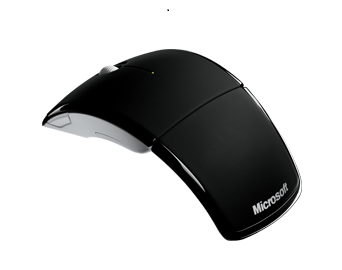
2009: SteelSeries World of Warcraft Mouse it was important as the first mouse meant to cater specifically to MMO players. It would later be followed by the Razer Naga, the SteelSeries Cataclysm mouse, and others.

2010:
Apple: Introducing Magic Mouse. The world’s first Multi-Touch mouse![]()

Microsoft: The SideWinder X8 Mouse Twelve Buttons – Seven are programmable close Customize the five programmable main buttons, plus left/right tilt wheel—seven programmable buttons— to customize your gaming experience.
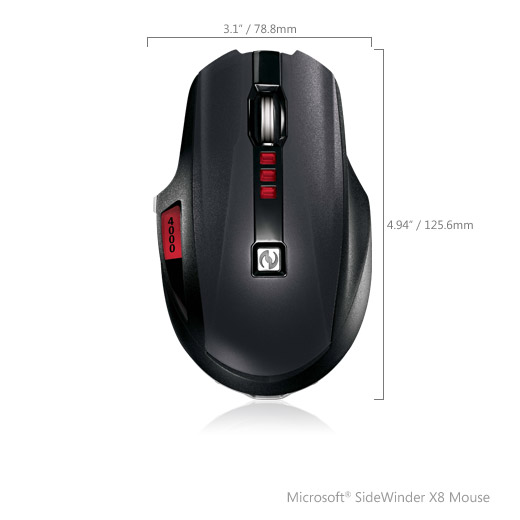
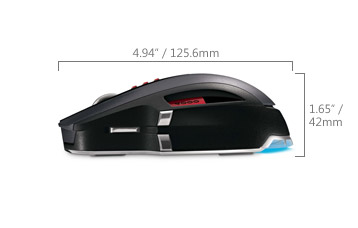
Logitech MX Air : Freespace? motion sensing In the air, you can easily browse and play your favorite media by moving your hand. The sensor transforms your motions into responsive cursor controls.


2011: Microsoft Touch Mouse: Touch Mouse features a large touch-sensitive surface that responds to one-, two- and three-fingered movements that are optimized for window management: snapping, moving, minimizing and maximizing, going backwards and forwards on your webpage, swinging between tasks, and so on.
|
|
1: One Finger: Scroll, flick, or pan any direction for quick navigation. Sweep your thumb to go forward or back. 2: Two Fingers: Snap to see your windows side by side, or maximize and minimize. 3: Three Fingers:Show all open windows or reveal your desktop. |
Other mouse
OO-Mouse 18 buttom on top

Saitek Cyborg R.A.T. 7:The title of #1 gaming mouse is not a crown that lingers for long but since its introduction the R.A.T. 7 has held onto this title with adjustable arms. The adjustable nature of the R.A.T. 7 is amazing and once it has been tweaked to fit the user’s hand, there is no mouse in existence that can compare in terms of comfort. Seven programmable buttons, three macro modes and a balanced weight make the R.A.T. 7 the best mouse on the market bar none.


Razer Naga Hex – MOBA/Action-RPG Gaming Mouse



Optical Finger mouse logisys brando

ASUS VivoMouse WT710 A 3-in-1 PC Controller – A Mouse, Touchpad and Wireless Remote
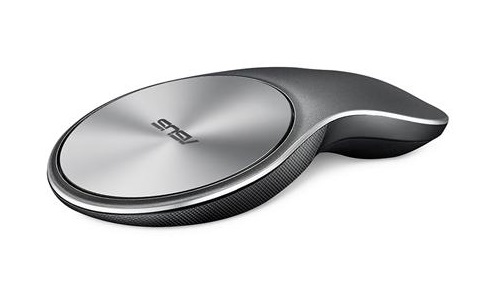
Mouse 2.0: Multi-touch Meets the Mouse







